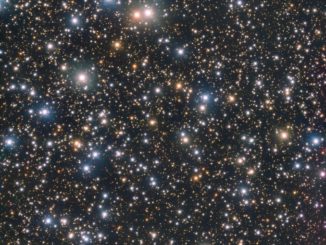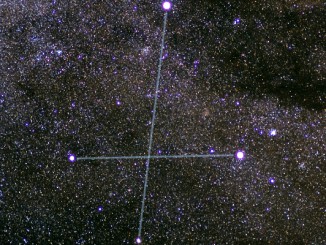
Crux


Hubble reveals chemical fingerprint of emission-line star
Showcased at the centre of this NASA/ESA Hubble Space Telescope image is an emission-line star known as IRAS 12196-6300 that lies some 2,300 light-years from Earth in the southern constellation of Crux. Under 10 million years old and not yet burning hydrogen at its core — unlike the Sun — this star is still in its infancy.

Exploring the riches of the Southern Cross
The Southern Cross, or Crux to give it its official name, is the smallest of all the 88 constellations and an iconic feature of the antipodean sky. Yet it is not solely an asterism and navigation aid of the far south, as it can be seen from the Tropic of Cancer when best placed. Come and explore its wealth of interesting objects for binoculars and small telescopes.

Exiled exoplanet kicked out of star’s local neighbourhood?
A planet discovered last year sitting at an unusually large distance from its star — 16 times farther than Pluto is from the Sun — may have been kicked out of its birthplace close to the star in a process similar to what may have happened early in our own solar system’s history. The planet’s 13-million-year-old parent star is known as HD 106906 and lies 300 light-years away.
